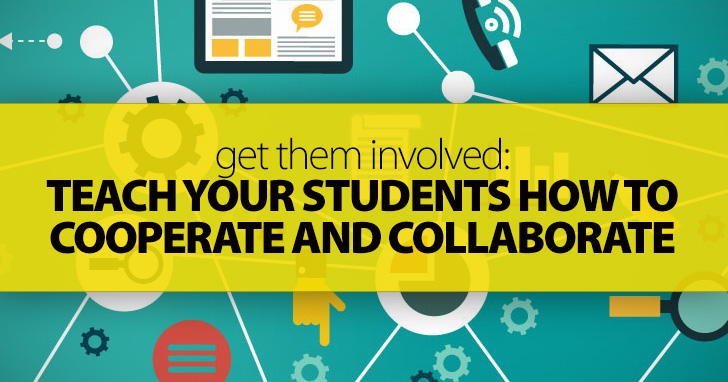Get Them Involved: Teach Your Students How To Cooperate And Collaborate


After all, working in groups requires communication and language use. It also builds relationships between students. What could be better for ESL students in a mainstream classroom? But in actuality, cooperative learning may be doing your EAL students more harm than good. Don’t believe me? Read on to see the group work strategy that really works.
Collaborative learning is what you might picture when you think of traditional group work. Students work in a group to complete a task. All of the students work at the same time, focused on the same task. The problem with this type of learning is that students don’t have a designated time to work independently. Because everyone is jumping in at the same time, EAL students can get lost in the mix. They may take longer to formulate their ideas into words, and by the time they are able to express their thoughts the group may have moved on to the next step in the task leaving them in the dust.
Collaborative learning is slightly different. Students still work together to complete a task, but before they work together in a group each student has an opportunity to work on their own. This independent time gives EAL students a chance to put their ideas into words. Then, when the group comes together to work, your EAL students are able to express themselves to their groupmates and aren’t delayed because they need time to find the words or grammar they are looking for. Students still work together to complete the task, but giving your EAL students time to work on the problem on their own ahead of time puts them on more equal footing for the task with their native speaking classmates. In addition, when each person shares their ideas with a partner or their group, the group can then offer them feedback, both positive and negative.
Collaborative learning has many benefits for the EAL learner. First, they are able to formulate their thoughts into words, eliminating or reducing the delay in expressing themselves they might otherwise experience during group work periods. Second, collaborative learning offers more opportunity for feedback from other students. EAL students can get feedback not only on their ideas but also on the language they use to express those ideas, particularly if they use incorrect or unclear vocabulary. Finally, collaborative learning gives your EAL students a more equal footing in their work groups. In cooperative learning, EAL students may withdraw and fail to participate. Likewise, their group members may not give them the respect they deserve because they are unable or unwilling to participate immediately. Collaborative learning reduces that inequality and in so doing encourages more respect for your EAL students.
One of the easiest collaborative activities you can do in your classroom is Think, Write, Pair, Share. This works well for introducing a new topic to your class. Say you were going to start a unit on the rainforest. To use Think, Write, Pair, Share, you would have each person think independently about what they know about the rainforest. Either as they think or after a few minutes designated thinking time, each person would write down their ideas about the rainforest.
Instead of introducing a general topic, you might choose to give your students a question related to the unit you are introducing. For example, you could give your students the question, “How do humans affect the rainforest?” Again, set aside a specific time for your students to think about the question and then have them write down their ideas.
After each person has worked individually to think and write, put students with a partner. Each person should take turns sharing their thoughts on the rainforest or on how humans affect the rainforest. During this time, partners can share thoughts that come to mind as their partner speaks. For your EAL students, this might also include learning specific vocabulary they might not have known before the activity. After pairs have shared their thoughts with each other, have each pair join another pair. Then in a group of four, each original pair shares what they talked about with the other pair. Instead of moving into groups of four, you can also come together as an entire class to share what you talked about in pairs.
Jigsaws are great for introducing reading material in a collaborative way. To do a jigsaw with your students, choose a reading selection and break it into logical divisions. You might divide your reading material based on subheadings within an article, for example. Then break your class into groups in number equal to the sections of your reading material. So if your reading selection has four sections, you would put your students into groups of four. Three sections of reading would go with groups of three. Each person in a group receives one section of the reading material. They take time to read in independently and note the important information in that section. They might choose to highlight important vocabulary or ideas or take notes on a separate piece of paper. After each person has finished his or her section, the group comes back together. Each person tells the groups the important information from their section of the reading. They can make notes on a piece of paper as they explain, or they can do all their explanation verbally. They cannot however, read portions of their reading selection to their groupmates or show their paper to their groupmates. After everyone has shared, the entire group works together to complete some task based on the information they read. That task could be anything from answering comprehension questions to following directions to bake a cake.
But when we give them some time to work independently before they work with other students, they can feel more confident, participate more, and garner more respect from their classmates. So the next time you put your students in group, make sure it’s after a few minutes for students to work independently.